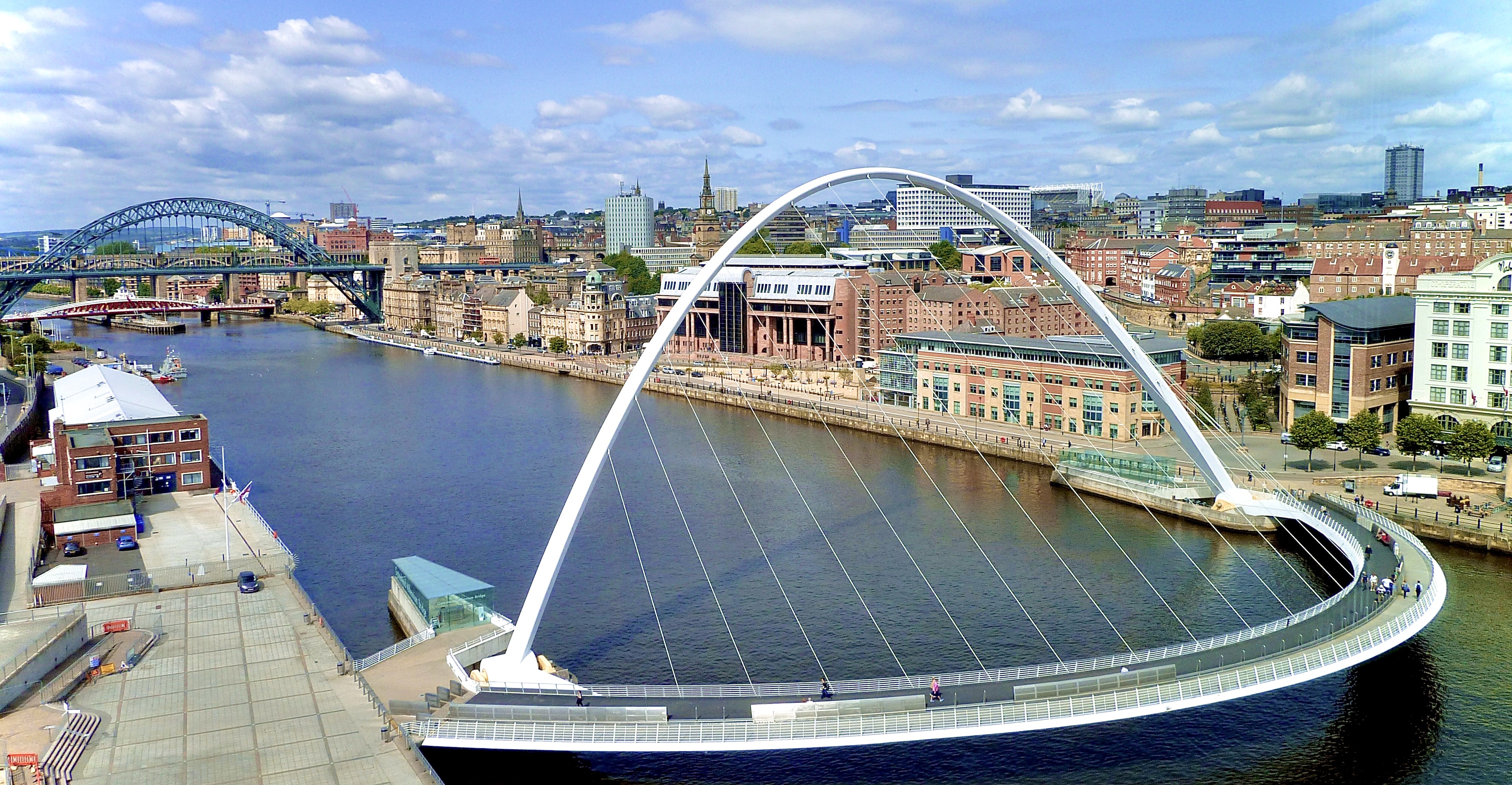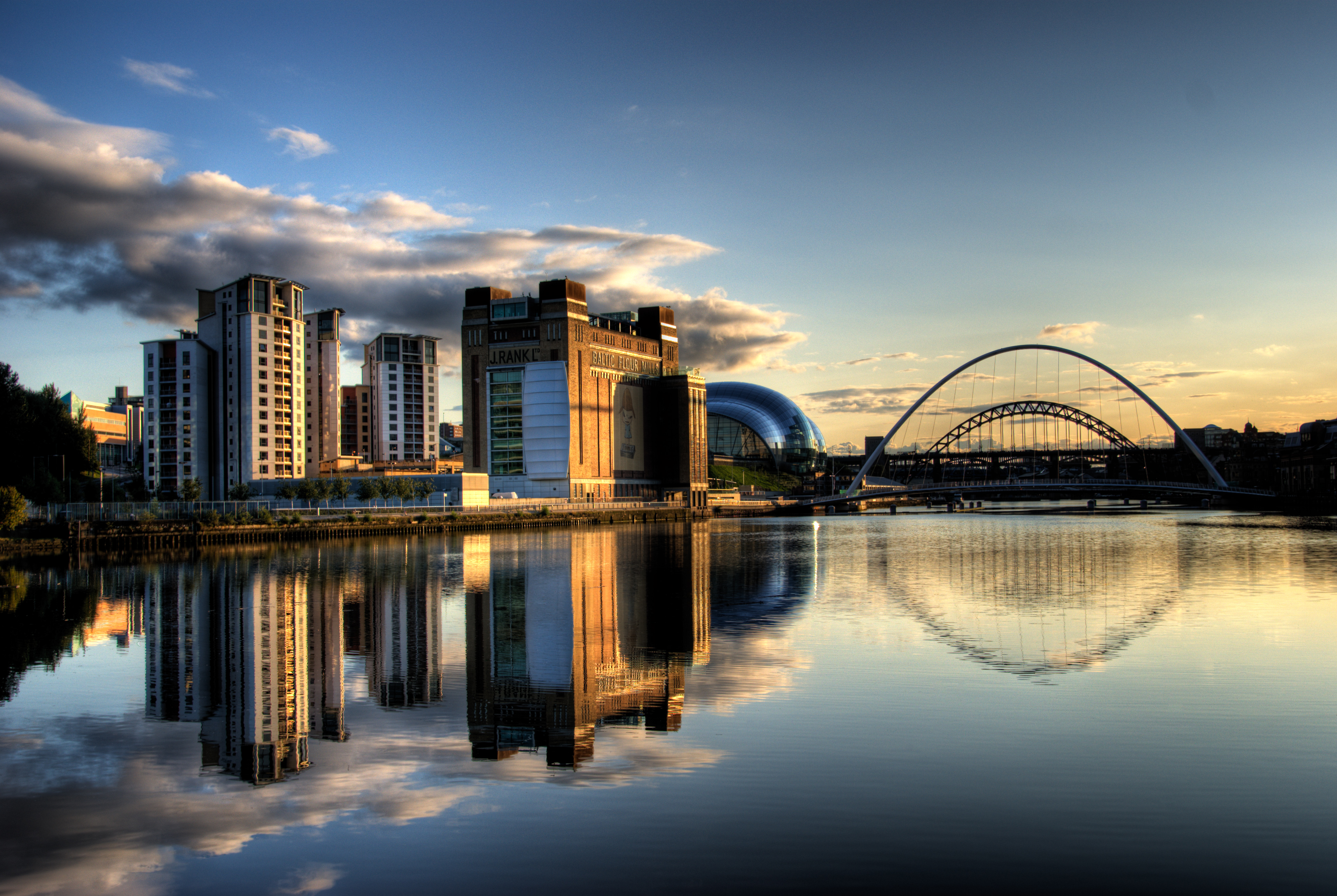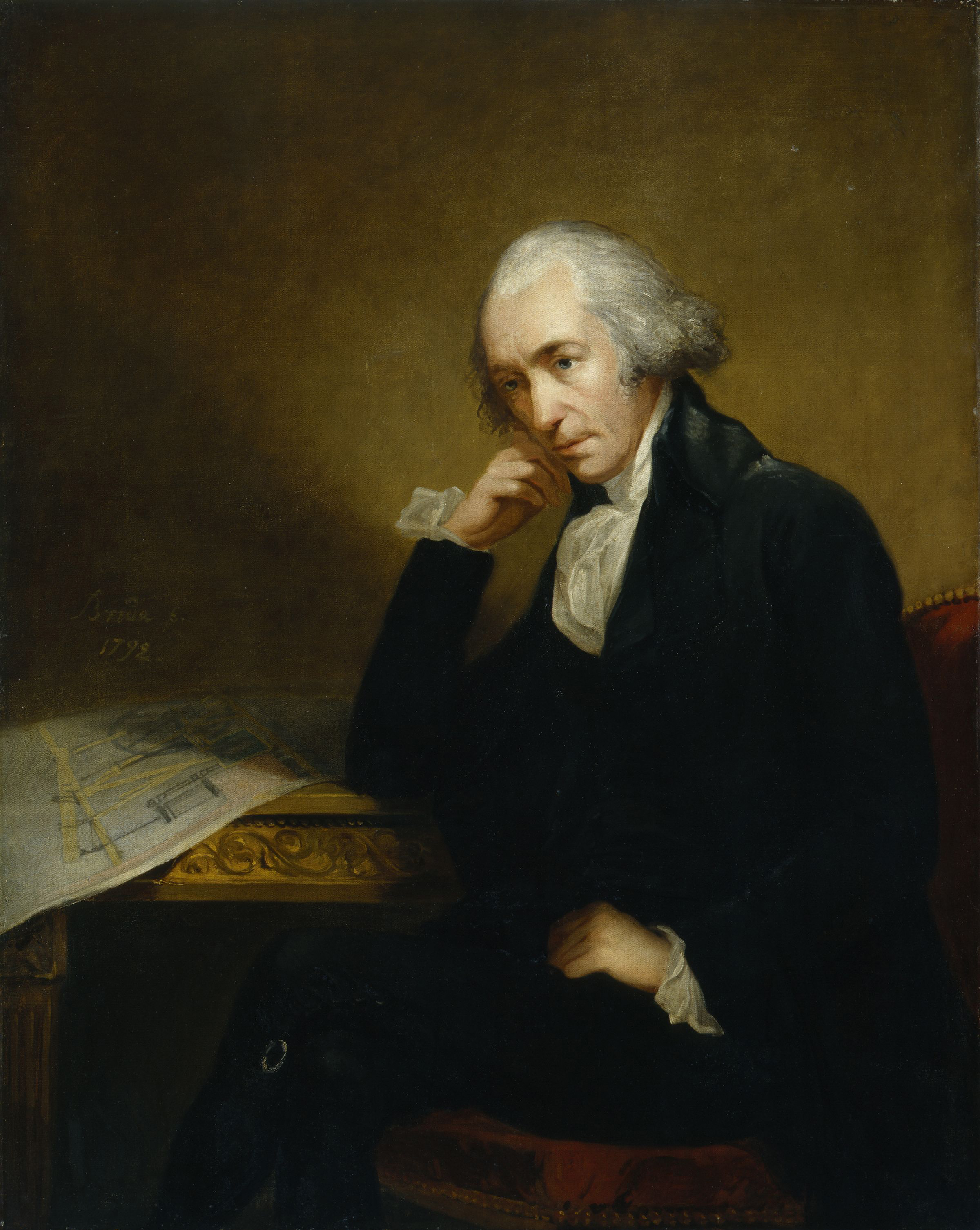|
Gateshead Millennium Bridge
The Gateshead Millennium Bridge is a pedestrian and cyclist tilt bridge spanning the River Tyne between Gateshead arts quarter on the south bank and Newcastle upon Tyne's Quayside area on the north bank. It was the first tilting bridge ever to be constructed. Opened for public use in 2001, the award-winning structure was conceived and designed by architectural practice WilkinsonEyre and structural engineering firm Gifford. The bridge is sometimes called the 'Blinking Eye Bridge' or the 'Winking Eye Bridge' due to its shape and its tilting method. The Millennium Bridge stands as the twentieth tallest structure in the city, and is shorter in stature than the neighbouring Tyne Bridge. History Historical context Gateshead Millennium Bridge is part of a long history of bridges built across the River Tyne, the earliest of which was constructed in the Middle Ages. As quay-based industries grew during the Industrial Revolution and Victorian era due to its accessible port, the ar ... [...More Info...] [...Related Items...] OR: [Wikipedia] [Google] [Baidu] |
Quayside
The Quayside is an area along the banks (quay) of the River Tyne in Newcastle upon Tyne (the north bank) and Gateshead (south bank) in Tyne and Wear, North East England, United Kingdom. History The area was once an industrial area and busy commercial dockside serving the area, while the Newcastle side also hosted a regular street market. In recent years the docks became run-down, and the area has since been heavily redeveloped to provide a modern environment for the modern arts, music and culture, as well as new housing developments (e.g. at St Peter's Marina). Along the Newcastle side is an area that houses restaurants, bars and night clubs as well as housing and the Newcastle Law Courts. The NewcastleGateshead initiative now lists the Quayside as a top ten attraction. The Gateshead side of the river is designated and signposted as Gateshead Quays. It is the site of the BALTIC Centre for Contemporary Art and The Sage Gateshead performing arts and conference centre. Also moored ... [...More Info...] [...Related Items...] OR: [Wikipedia] [Google] [Baidu] |
Baltic Centre For Contemporary Art
Baltic Centre for Contemporary Art (also known simply as (the) Baltic, stylised as BALTIC) is a centre for contemporary art located on the south bank of the River Tyne in Gateshead, Tyne and Wear, England. It hosts a frequently changing variety of exhibitions, events, and educational programmes with no permanent exhibition. The idea to open a centre for contemporary arts in Gateshead was developed in the 1990s, which was a time of regeneration for the local area—the Sage and Gateshead Millennium Bridge was also being conceived of in this period. Baltic opened in July 2002 in a converted flour mill, which had operated in various capacities from 1950 to 1984. The architectural design of Baltic was devised by Dominic Williams of Ellis Williams Architects, who won a competition to design the new contemporary arts centre in 1994. The building features exhibition spaces, a visitor centre, a rooftop restaurant and external viewing platforms which offer views of the River Tyne. Ba ... [...More Info...] [...Related Items...] OR: [Wikipedia] [Google] [Baidu] |
Gateshead Metropolitan Borough Council
Gateshead () is a large town in northern England. It is on the River Tyne's southern bank, opposite Newcastle upon Tyne, Newcastle to which it is joined by seven bridges. The town contains the Gateshead Millennium Bridge, Millennium Bridge, Sage Gateshead, The Sage, and the Baltic Centre for Contemporary Art, and has on its outskirts the twenty metre tall Angel of the North sculpture. Historic counties of England, Historically part of County Durham, under the Local Government Act 1888 the town was made a county borough, meaning it was administered independently of the county council. Since 1974, the town has been administered as part of the Metropolitan Borough of Gateshead within Tyne and Wear. In the 2011 Census, town had a population 120,046 while the wider borough had 200,214. Toponymy Gateshead is first mentioned in Latin translation in Bede, Bede's ''Ecclesiastical History of the English People'' as ''ad caput caprae'' ("at the goat's head"). This interpretation is consis ... [...More Info...] [...Related Items...] OR: [Wikipedia] [Google] [Baidu] |
Newcastle Crown Court
Newcastle usually refers to: * Newcastle upon Tyne, a city and metropolitan borough in Tyne and Wear, England *Newcastle-under-Lyme, a town in Staffordshire, England * Newcastle, New South Wales, a metropolitan area in Australia, named after Newcastle upon Tyne Newcastle, New Castle or New Cassel may also refer to: Places Australia * City of Newcastle, a local government area in New South Wales * County of Newcastle, a cadastral unit in South Australia * Division of Newcastle, a federal electoral division in New South Wales * Electoral district of Newcastle, an electoral district of the New South Wales Legislative Assembly *Electoral district of Newcastle (South Australia) 1884–1902, 1915–1956 in the South Australian House of Assembly * Newcastle, New South Wales, a city in New South Wales * Newcastle Waters, a town and locality in the Northern Territory * Newcastle West, New South Wales, inner suburb of the city * Toodyay, Western Australia, known as Newcastle until 1910 Can ... [...More Info...] [...Related Items...] OR: [Wikipedia] [Google] [Baidu] |
World War II
World War II or the Second World War, often abbreviated as WWII or WW2, was a world war that lasted from 1939 to 1945. It involved the World War II by country, vast majority of the world's countries—including all of the great powers—forming two opposing military alliances: the Allies of World War II, Allies and the Axis powers. World War II was a total war that directly involved more than 100 million Military personnel, personnel from more than 30 countries. The major participants in the war threw their entire economic, industrial, and scientific capabilities behind the war effort, blurring the distinction between civilian and military resources. Air warfare of World War II, Aircraft played a major role in the conflict, enabling the strategic bombing of population centres and deploying the Atomic bombings of Hiroshima and Nagasaki, only two nuclear weapons ever used in war. World War II was by far the List of wars by death toll, deadliest conflict in hu ... [...More Info...] [...Related Items...] OR: [Wikipedia] [Google] [Baidu] |
Internet Archive
The Internet Archive is an American digital library with the stated mission of "universal access to all knowledge". It provides free public access to collections of digitized materials, including websites, software applications/games, music, movies/videos, moving images, and millions of books. In addition to its archiving function, the Archive is an activist organization, advocating a free and open Internet. , the Internet Archive holds over 35 million books and texts, 8.5 million movies, videos and TV shows, 894 thousand software programs, 14 million audio files, 4.4 million images, 2.4 million TV clips, 241 thousand concerts, and over 734 billion web pages in the Wayback Machine. The Internet Archive allows the public to upload and download digital material to its data cluster, but the bulk of its data is collected automatically by its web crawlers, which work to preserve as much of the public web as possible. Its web archive, the Wayback Machine, contains hundreds of b ... [...More Info...] [...Related Items...] OR: [Wikipedia] [Google] [Baidu] |
Reaktion Books
Reaktion Books is an independent book publisher based in Islington, London, England. It was founded in 1985 in Edinburgh, Scotland, and moved to London in 1987. Reaktion originally focused on the fields of art, architecture, and design. In recent years it has broadened to include more areas and also publishes series of books. Details Reaktion originally focused on the fields of art, architecture, and design – its first book was '' Ian Hamilton Finlay: A Visual Primer'' by Yves Abrioux. In recent years Reaktion's list has broadened substantially, and now also encompasses animal studies, Asian art and culture, biography, cultural studies, current events, fashion, film, food history, geography, general history, music, philosophy, photography, politics, and sports history. Reaktion now produces around 70 new titles each year and has about 500 titles in print. Among the monographs released by Reaktion are studies of the Ottoman architect Sinan and the artists Delaroche, Holbein, ... [...More Info...] [...Related Items...] OR: [Wikipedia] [Google] [Baidu] |
Victorian Era
In the history of the United Kingdom and the British Empire, the Victorian era was the period of Queen Victoria's reign, from 20 June 1837 until her death on 22 January 1901. The era followed the Georgian period and preceded the Edwardian period, and its later half overlaps with the first part of the ''Belle Époque'' era of Continental Europe. There was a strong religious drive for higher moral standards led by the nonconformist churches, such as the Methodists and the evangelical wing of the established Church of England. Ideologically, the Victorian era witnessed resistance to the rationalism that defined the Georgian period, and an increasing turn towards romanticism and even mysticism in religion, social values, and arts. This era saw a staggering amount of technological innovations that proved key to Britain's power and prosperity. Doctors started moving away from tradition and mysticism towards a science-based approach; medicine advanced thanks to the adopti ... [...More Info...] [...Related Items...] OR: [Wikipedia] [Google] [Baidu] |
Industrial Revolution
The Industrial Revolution was the transition to new manufacturing processes in Great Britain, continental Europe, and the United States, that occurred during the period from around 1760 to about 1820–1840. This transition included going from hand production methods to machines, new chemical manufacturing and iron production processes, the increasing use of steam power and water power, the development of machine tools and the rise of the mechanized factory system. Output greatly increased, and a result was an unprecedented rise in population and in the rate of population growth. Textiles were the dominant industry of the Industrial Revolution in terms of employment, value of output and capital invested. The textile industry was also the first to use modern production methods. The Industrial Revolution began in Great Britain, and many of the technological and architectural innovations were of British origin. By the mid-18th century, Britain was the world's leadin ... [...More Info...] [...Related Items...] OR: [Wikipedia] [Google] [Baidu] |
Quay
A wharf, quay (, also ), staith, or staithe is a structure on the shore of a harbour or on the bank of a river or canal where ships may dock to load and unload cargo or passengers. Such a structure includes one or more berths ( mooring locations), and may also include piers, warehouses, or other facilities necessary for handling the ships. Wharves are often considered to be a series of docks at which boats are stationed. Overview A wharf commonly comprises a fixed platform, often on pilings. Commercial ports may have warehouses that serve as interim storage: where it is sufficient a single wharf with a single berth constructed along the land adjacent to the water is normally used; where there is a need for more capacity multiple wharves, or perhaps a single large wharf with multiple berths, will instead be constructed, sometimes projecting over the water. A pier, raised over the water rather than within it, is commonly used for cases where the weight or volume of cargos wil ... [...More Info...] [...Related Items...] OR: [Wikipedia] [Google] [Baidu] |
Middle Ages
In the history of Europe, the Middle Ages or medieval period lasted approximately from the late 5th to the late 15th centuries, similar to the post-classical period of global history. It began with the fall of the Western Roman Empire and transitioned into the Renaissance and the Age of Discovery. The Middle Ages is the middle period of the three traditional divisions of Western history: classical antiquity, the medieval period, and the modern period. The medieval period is itself subdivided into the Early Early may refer to: History * The beginning or oldest part of a defined historical period, as opposed to middle or late periods, e.g.: ** Early Christianity ** Early modern Europe Places in the United States * Early, Iowa * Early, Texas * Early ..., High Middle Ages, High, and Late Middle Ages. Population decline, counterurbanisation, the collapse of centralized authority, invasions, and mass migrations of tribes, which had begun in late antiquity, continued i ... [...More Info...] [...Related Items...] OR: [Wikipedia] [Google] [Baidu] |









